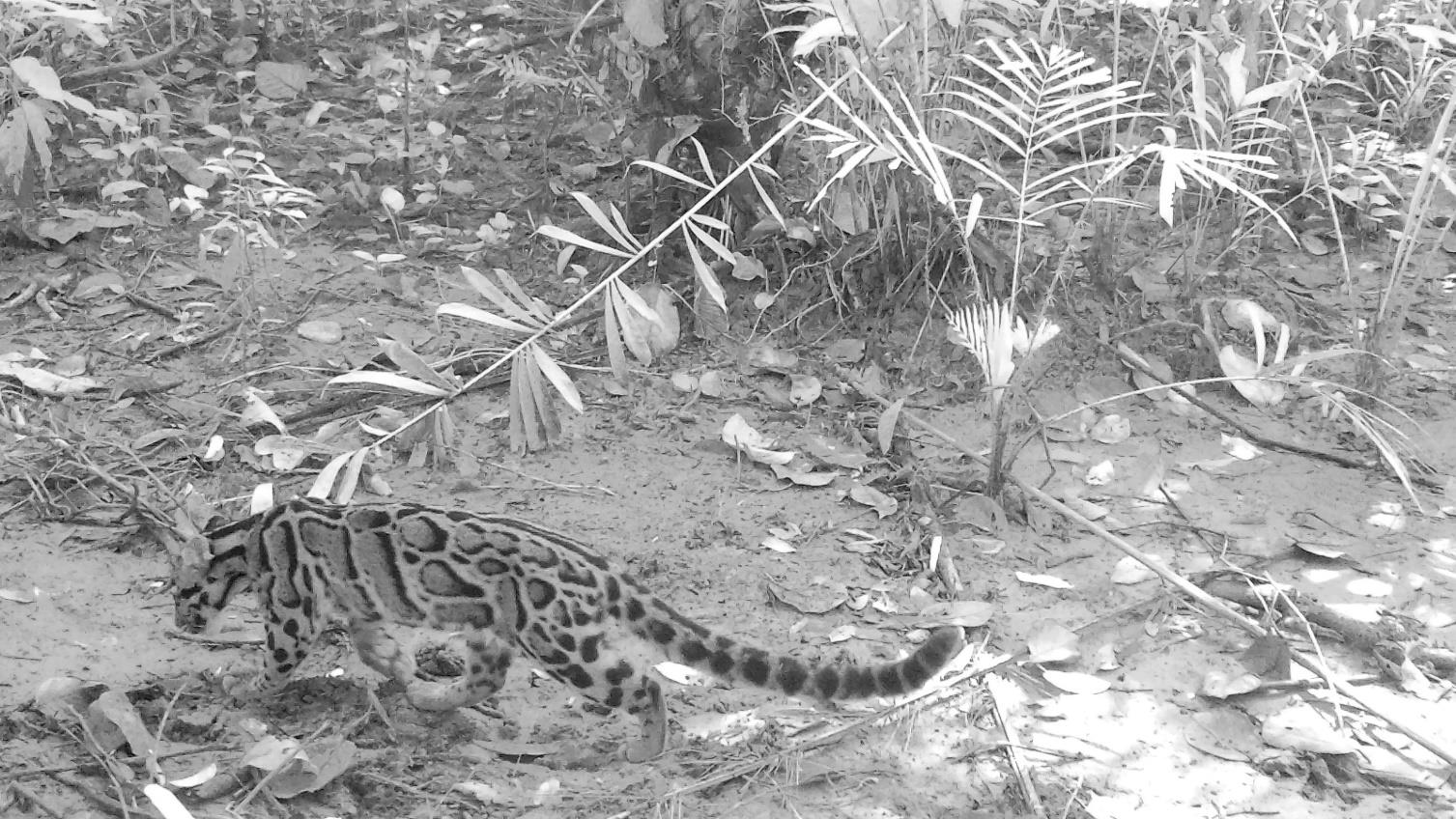Diversity and Habitat Use of Terrestrial Mammals in the Area Proposed for Water Resource Development in Khao Soi Dao Wildlife Sanctuary, Thailand 10.32526/ennrj/19/2020222
Main Article Content
Abstract
The Khlong Ta Liu dam construction plan was re-proposed to be constructed in the forest area of Khao Soi Dao Wildlife Sanctuary in the Ta-riu tributary without a biodiversity impact assessment. Five camera traps were mounted at the hotspot points for terrestrial mammals next to the main trail for 376 trap nights from the forest edge to the forest interior. Fifteen species of terrestrial mammals were found. Two species found were categorized as having endangered status, while seven have vulnerable status. Grazers and browsers, i.e., Sambar, Gaur, Northern Red Muntjac, and Asian Elephant were mostlydetected at the forest edge, while omnivores and frugivores, i.e., Wild Boar,Greater Hog Badger, and Northern Pig-tailed Macaque were largely detected inthe forest interior. Dhole should be a carnivore species specific to the forestedge while Clouded Leopard should be in the forest interior. The NormalizedDifference Vegetation Index (NDVI) may relate to species of terrestrialmammals detected at each habitat. Among the five habitats, three would bedestroyed upon construction of the dam, including the habitat with the highestdiversity of terrestrial mammals. The habitat that would likely be least impactedhad the lowest species richness of terrestrial mammals.
Article Details
Published articles are under the copyright of the Environment and Natural Resources Journal effective when the article is accepted for publication thus granting Environment and Natural Resources Journal all rights for the work so that both parties may be protected from the consequences of unauthorized use. Partially or totally publication of an article elsewhere is possible only after the consent from the editors.
References
Davies R. Sighting of a clouded leopard (Neofelis nebulosa) in a troop of pigtail macaques (Macaca nemestrina) in Khao Yai National Park, Thailand. Natural History Bulletin of the Siam Society 1990;28:95-6.
Grassman L, Lynam A, Mohamad S, Duckworth JW, Bora J, Wilcox D, et al. Neofelis nebulosa the IUCN red list of threatened species 2016 [Internet]. 2016 [cited 2020 Sep 7]. Available from: https://www.iucnredlist.org/species/14519/ 97215090.
Intaraprasit S, Sukmasuang R, Duengkae P. Abundance and prey selection of dhole (Cuon alpinus) in Huai Kha Khaeng Wildlife Sanctuary, Uthai Thani Province. Journal of Wildlife in Thailand 2017;24:63-74 (in Thai).
International Union for Conservation of Nature (IUCN). The IUCN red list of threatened species [Internet]. 2020 [cited 2020 Sep 7]. Available from: https://www.iucnredlist.org/.
Japan International Cooperation Agency (JICA). The Feasibility Study on the Agricultural Water Development Project of Chanthaburi River Basin. Japan: Japan International Cooperation Agency; 1989.
Kamler J, Thatdokkham K, Rostro-García S, Bousa A, Caragiulo A, Crouthers R, et al. Diet and prey selection of dholes in evergreen and deciduous forests of Southeast Asia. Journal of Wildlife Management 2020;84:1396-405.
Kateworachai S. Using the king’s philosophy to extend the Bhakti Rambhai Canal [Internet]. 2017 [cited 2020 Sep 7]. Available from: https://www.dailynews.co.th/agriculture/578620 (in Thai).
Kitamura S, Thong-Aree S, Madsri S, Poonswad P. Mammal diversity and conservation in a small isolated forest of Southern Thailand. Raffles Bulletin of Zoology 2010;58:145-56.
Kolasartsanee I. Networking Non-Timber Forest Product (NTFP) Collectors for the Population Recovery of Pileated Gibbon (Hylobates pileatus) [dissertation]. Bangkok, Mahidol University; 2014.
Kolasartsanee I, Srikosamatara S. Applying “Diffusion of innovation” theory and social marketing for the recovery of pileated gibbon Hylobates pileatus in North Ta-riu watershed, Khao Soi Dao Wildlife Sanctuary, Thailand. Conservation Evidence 2014;11:61-5.
Kolasartsanee I. Patrol area determination using the prediction from pileated gibbon (Hylobates pileatus) distribution in Ta-riu watershed, Khao Soi Dao Wildlife Sanctuary, Thailand. Srinakharinwirot Science Journal 2016;32:152-60.
Kolasartsanee I, Srikosamatara S. Evidence of pileated gibbons Hylobates pileatus recolonization in an area proposed for water resource development in Khao Soi Dao Wildlife Sanctuary, Thailand. Asian Primates Journal 2019;8:41-4.
Krebs C. Ecological Methodology. California, USA: Addison-Wesley; 1999.
Ngoprasert D, Lynam A, Sukmasuang R, Tantipisanuh N, Chutipong W, Steinmetz R, et al. Occurrence of three felids across a network of protected areas in Thailand: prey, intraguild, and habitat associations. Biotropica 2012;44:810-7.
Petersen W, Steinmetz R, Sribuarod K, Ngoprasert D. Density and movements of mainland clouded leopards (Neofelis nebulosa) under conditions of high and low poaching pressure. Global Ecology and Conservation 2020;23:e01117.
Sillero-Zubiri C, Hoffmann M, Macdonald DW. Canids: Foxes, Wolves, Jackals and Dogs. Status Survey and Conservation Action Plan. Gland, Switzerland and Cambridge, UK: IUCN/SSC Canid Specialist Group; 2004.
Srikosamatara S. Ecology and Behavior of the Pileated Gibbon (Hylobates pileatus) in Khao Soi Dao Wildlife Sanctuary, Thailand [dissertation]. Bangkok, Mahidol University; 1980.
Srikosamatara S. Ecology of pileated gibbons in South-east Thailand. In: Preuschoft H, Chivers D, Brockelman W, Creel N, editors. The Lesser Apes: Evolutionary and Behavioural Biology. Edinburgh: Edinburgh University Press; 1984. p. 242-57.
Wearn O, Glover-Kapfer P. Camera-trapping for Conservation: A Guide to Best-practices. UK: World Wildlife Fund; 2017.

